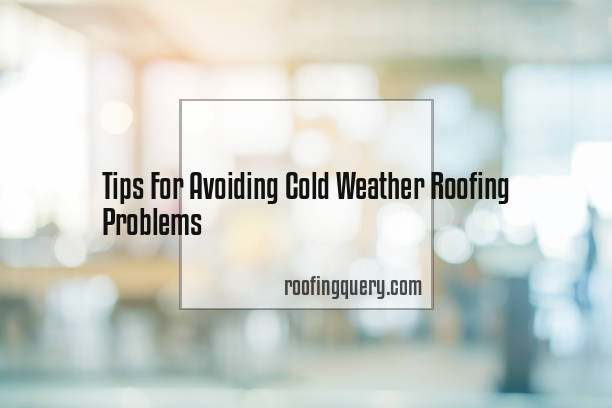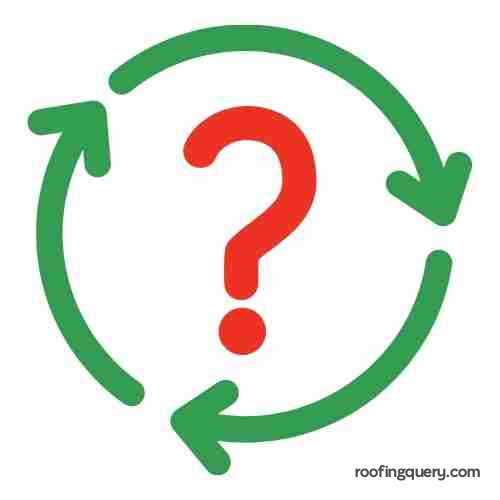If you live in an area that experiences cold weather, you know that your roof can be one of the first places to suffer from the effects of the weather. Here are some tips to help you avoid cold weather roofing problems:
1. Inspect your roof regularly. Look for any signs of damage, such as cracked or missing shingles, or any other areas that look like they may be vulnerable to the cold weather.
2. Make sure your roof is properly insulated. This will help to keep the heat in, and the cold out.
3. If you do find any damage to your roof, have it repaired as soon as possible. The longer you wait, the more damage the cold weather can do.
4. Keep your gutters clean. Clogged gutters can cause water to back up onto your roof, which can lead to freezing and thawing, and eventually, roof damage.
5. Be proactive about snow and ice. If you know that a storm is coming, take the time to clear any snow and ice off of your roof. This can help to prevent damage from the weight of the snow and ice, as well as from the melting and refreezing that can occur.
By following these tips, you can help to avoid cold weather roofing problems, and keep your roof in good shape for years to come.
What Are Some Tips For Avoiding Cold Weather Roofing Problems?
When it comes to roofing, cold weather can cause a lot of problems. Here are some tips for avoiding cold weather roofing problems:
1. Make sure your roof is in good condition before winter hits. This means fixing any leaks or damage that could worsen in colder weather.
2. Keep an eye on your roof during the winter. If you see any ice or snow build-up, have it removed as soon as possible.
3. When it comes to shoveling snow off your roof, be careful. Don’t damage the shingles and be careful of any icicles that could fall and hurt someone.
4. If you have a fireplace, have the chimney inspected before you use it. Make sure there’s no debris blocking the flue and that the structure is sound.
5. Lastly, if you do experience any roofing problems in the winter, don’t wait to get them fixed. The sooner you address the issue, the less damage it will cause.
What Are Some Common Cold Weather Roofing Problems?
When the weather outside is cold, your roof is susceptible to a number of different problems. Some of the most common cold weather roofing problems include:
1. Ice dams.
Ice dams form when heat escapes from your home and melts the snow on your roof. The water then runs down to the colder edges of your roof and freezes, creating a dam. Ice dams can cause serious damage to your roof, including leaks and structural damage.
2. Snow and ice buildup.
Too much snow and ice on your roof can cause it to collapse. If you live in an area that gets a lot of snow, you should have your roof regularly checked for snow and ice buildup.
3. Roof leaks.
Cold weather can cause existing roof leaks to worsen. If you have a leaky roof, it’s important to have it fixed as soon as possible before the problem gets worse.
4. Condensation.
In cold weather, condensation can form on your roof and cause problems such as mold and mildew. If you notice condensation on your roof, it’s important to have it checked out by a professional.
5. Shingle damage.
Shingles can be damaged by cold weather, wind, and ice. If you notice any damage to your shingles, it’s important to have it repaired as soon as possible.
If you live in a cold climate, it’s important to have your roof regularly inspected by a professional. By catching problems early, you can avoid serious damage to your roof and keep your home safe and comfortable all winter long.
How Can I Prevent Cold Weather Roofing Problems?
It’s that time of year again when the temperature starts to drop and we start to think about how to prevent cold weather roofing problems. Here are a few tips to help you avoid any issues:
1. Inspect your roof regularly.
Make sure to inspect your roof at least once a year to look for any potential issues. If you live in an area with a lot of snow, you may want to inspect it more often.
2. Keep your gutters clean.
Gutters play a crucial role in preventing water damage to your roof. Make sure to clean them out regularly, especially in the fall when leaves can clog them up.
3. Trim trees near your home.
Trees can cause damage to your roof, especially during a storm. If you have any trees near your home, make sure to trim them back to avoid any damage.
4. Be aware of ice dams.
Ice dams can form when snow and ice melt and then refreeze. This can cause damage to your roof and gutters. Be sure to remove any snow and ice from your roof regularly to prevent this.
5. Call a professional if you have any concerns.
If you’re ever concerned about the condition of your roof, be sure to call a professional. They can help you assess the situation and make any necessary repairs.
By following these tips, you can help prevent any cold weather roofing problems.
What Should I Do If I Have Cold Weather Roofing Problems?
It’s that time of year again! The time when the cold weather starts to creep in and we start to think about all the things we need to
Do to get our homes ready for winter. One of the things on that list is usually roofing. But what do you do if you have cold weather roofing problems?
First, don’t panic! It’s not the end of the world if you have a few roofing issues. Cold weather can cause all sorts of problems, from frozen pipes to cracked foundations. But with a little bit of know-how, you can fix most cold weather roofing problems yourself.
Here are a few tips to help you out:
1. Inspect your roof regularly. This is one of the best ways to prevent cold weather roofing problems in the first place. Every few months, take a look at your roof and look for any signs of damage. If you see anything, don’t hesitate to call a professional.
2. Keep your gutters clean. This is another good way to prevent roofing problems. Clogged gutters can cause all sorts of issues, including leaking roofs. So, make sure you clean them out regularly.
3. Be prepared for ice and snow. If you live in an area that gets a lot of snow, you need to be prepared. Make sure you have a shovel and some salt on hand so you can clear your roof if it starts to accumulate too much snow.
4. Know when to call a professional. There are some roofing problems that you just can’t fix on your own. If you’re not sure how to fix something, or if the problem is too big, it’s always best to call a professional.
Cold weather roofing problems don’t have to be a nightmare. With a little bit of preparation and some basic knowledge, you can fix most issues yourself. But, if you’re ever in doubt, don’t hesitate to call a professional.
Conclusion
If you live in an area with cold weather, it is important to take steps to avoid roofing problems. Some simple tips include: making sure your roof is in good condition, keeping your gutters clean, and being aware of ice dams. By following these tips, you can help keep your roof in top condition and avoid costly repairs.
If you have any questions about avoiding roofing problems in cold weather, feel free to leave a comment below.


